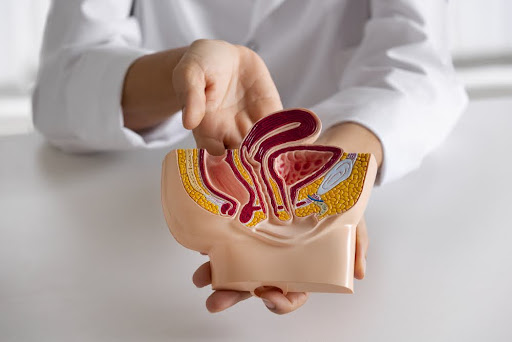
Inguinal Hernia Surgery in Mumbai
- Home
- Inguinal Hernia Surgery in Mumbai
Inguinal Hernia Surgery in Mumbai
The word “hernia” is derived from the Latin word for “rupture”. It is defined as an abnormal protrusion of an organ through a defect in its surrounding walls. It typically occurs due to weakness in the wall.
Inguinal Hernia (Hernia of the groin)
Inguinal hernia occurs due to a weakness in the abdominal wall in the region of the groin. Inguinal hernias are very common and 75% of all hernias occur in the inguinal region. Men are 25 times more prone to develop an inguinal hernia as compared to women. Inguinal hernia repair surgery is one of the most commonly performed surgical procedure. Inguinal hernias are not dangerous per say but they do not heal on their own and surgical intervention in the form of inguinal hernia surgery is needed for almost all hernias. However, an untreated inguinal hernia may lead to strangulation and that may need emergency care or else it may become life threatening at times.
Types of Inguinal hernias:
- Direct
- Indirect
- Combined
- Femoral
Congenital inguinal hernia is seen in infants.
Causes of inguinal hernia
Causes of inguinal hernia are as under:
- Pre-existing weakness of the abdominal wall.
- Increased intra-abdominal pressure
- Combination of increased intra-abdominal pressure alongwith a pre-existing weak spot in the abdominal wall
- Chronic cough/bronchitis
- Chronic constipation
- Straining while passing urine (due to an enlarged prostrate in men, stricture of the urethra etc)
- Pregnancy
- It can also arise from the incision of a previous scar of surgery.
- Previous inguinal hernia repair that has recurred.
Signs and symptoms of inguinal hernia
Signs and symptoms of an inguinal hernia are as under:
Pain in the region of the groin
- Dull ache or dragging sensation in the groin
- Swelling in the groin that increases on standing up or walking and decreases on lying down
- Swelling around the testicles if the intestinal content of the hernia has protruded into the scrotum.
- If the hernia has become irreducible then there will be a permanent swelling which will not reduce on lying down.
- Severe pain, redness, vomiting and constipation may be a sign of an obstructed or incarcerated hernia.
Congenital inguinal hernia in children
Most inguinal hernias in children are congenital in nature. The incidence of congenital inguinal hernias is 1 to 5%. In infants and children, a swelling may be visible only if the child is crying, coughing or straining due to some reason. Inguinal hernia repair surgery is one of the most commonly performed paediatric surgery. Almost all congenital inguinal hernias require surgical treatment to prevent complications like obstruction and strangulation.
Diagnosis of inguinal hernia
A protruding swelling in the region of the groin is a sign of hernia especially if this swelling, increases in size on straining (coughing, walking etc) and decreases in size on lying down. Sometimes, this swelling may become painful and it may not be possible to push it back into the abdomen. This means that the hernia has become irreducible and one must consult the surgeon immediately. If the swelling has become painful, red, tender and irreducible then it is a sign of strangulation. Strangulated hernia is a surgical emergency and one must visit the hospital without any delay.
Diagnosis of an inguinal hernia is mainly done on clinical examination. An ultrasound of the abdomen may be performed to confirm the size of the defect and determine nature of the contents of the hernia. Other tests may be advised by the doctor depending on your clinical profile.
Inguinal hernia surgery
Inguinal hernia surgery is required in almost all cases with a hernia. Rarely, in case of very small defects the surgeon may advise watchful waiting. Inguinal hernia surgery may also be deferred if the patient is medically unfit for surgery. Inguinal hernia surgery is traditionally performed either through the open approach or more recently through the laparoscopic approach.
- Open inguinal hernia surgery
Open inguinal hernia surgery is of three types-
Herniotomy– This type of hernia surgery is mainly performed in infants and small children. A herniotomy entails removal of hernia sac only.
Herniorrhaphy– This type of hernia surgery entails a herniotomy and closure of the posterior wall of the hernia. A herniorrhaphy alone is not performed routinely nowadays as the recurrence rates are much higher compared to mesh repair.
Hernioplasty– This type of hernia surgery is more commonly performed nowadays. A hernioplasty entails a herniorrhaphy with reinforcement of the posterior wall with a synthetic mesh. This is the preferred technique for hernia surgery as the recurrence rates are much lower as compared to a herniorrhaphy alone. There are various techniques to perform a hernioplasty. These include the open Lichenstein tension free repair, Bassini’s repair, Shouldice repair, prolene hernia system (PHS) etc.
Open inguinal hernia repair surgery may be performed under local anesthesia as a day care procedure. Inguinal hernia repair surgery may also need to be performed under sedation of general anesthesia depending on the patients’ clinical profile.
- Laparoscopic inguinal hernia repair surgery
Laparoscopic inguinal hernia repair surgery is performed through 3 tiny sub-centimetre cuts on the abdomen. As compared to open hernia repair surgery, post-operative recovery is much faster after laparoscopic inguinal hernia repair. Degree of pain is also lesser and patients are mobile much faster. Patient also return to work much earlier after laparoscopic inguinal hernia repair surgery. This technique is also more useful for recurrent inguinal hernia repair.
Laparoscopic inguinal hernia repair surgery may be performed either by a TEP- Totally extra-peritoneal repair or TAPP- Trans-abdominal pre-peritoneal repair. A synthetic mesh is placed in both the types of repair. The surgeon will recommend ideal procedure for you depending on your clinical profile.
Laparoscopic hernia repair surgery is a good operation and has great results in the hands of an experienced surgeon.
Inguinal hernia surgery cost
Hernia surgery cost depends on a lot of factors. Inguinal hernia surgery cost depends on the clinical profile of the patient, type and size of synthetic mesh used in surgery, duration of surgery, class of room selected etc. Inguinal hernia repair surgery cost also depends on whether an open or laparoscopic repair is performed. Hernia repair treatment cost is marginally higher when performed laparoscopically. Cost of hernia surgery is usually covered by health insurance.
Inguinal hernia repair surgery FAQs
- Can an inguinal hernia be treated without surgery?
Inguinal hernias cannot be treated conservatively. There is no medical treatment for hernia. Surgery may be deferred temporarily for reducible hernias but will be needed eventually. The doctor may also decide to defer surgery in patients who are medically unfit to undergo surgery. If the hernia is irreducible or strangulated then an emergency surgery is recommended.
- How do I prepare for hernia surgery?
After you have consulted the doctor, you will need to get certain investigations done. Once your investigations have been seen by the doctor and you are medically fit to undergo surgery, a date will be fixed for surgery. If you are on any blood thinner medications, they will need to be stopped atleast 5 days before the surgery. You can get admitted either one evening before or on the morning of surgery based on doctor’s instructions. You will also be guided about the cost of inguinal hernia repair surgery during this time.
- Will I get a lot of pain after surgery?
Degree of pain is much less after laparoscopic surgery as compared to open surgery. You will be covered with round the clock analgesics during the hospital stay. You will be able to walk around within 4 to 6 hours after laparoscopic surgery.
- When will I get discharged?
Most often patients get discharged on the day after their surgery. However, it depends on their clinical profile and condition. Open hernia repair done under local anaesthesia can also be performed as a day care procedure.
- What are the precautions to be taken after inguinal hernia repair surgery?
It is advised not to lift any heavy weights and perform any strenuous activities. Patients must seek treatment for chronic cough and straining at passing urine or stools. Any kind of straining can lead to a recurrence of hernia in the future.
- When can I get back to work after inguinal hernia surgery?
You can get back to work within a week after surgery. However, it may vary depending on your clinical condition. Some patients may get back even earlier than a week after surgery and rarely some may take a bit longer.
- Can the hernia recur even after surgery?
Rarely a hernia may recur even after surgery. This depends on a lot of factors like the tone of the abdominal wall, size of defect and size of mesh used, activity level of the patient, intra-abdominal fat content etc.
- Can a hernia become life-threatening?
Hernias are very common. Hernia surgery is usually uncomplicated. A strangulated hernia when left untreated can lead to signs and symptoms of obstruction and in later stages can lead to sepsis and become life threatening. Hence it is very important to take timely action in such cases so as to avoid complications at a later stage.
- Is there a difference in cost of laparoscopic inguinal hernia repair surgery versus open surgery?
Cost of inguinal hernia surgery depends on a lot of factors as discussed above. Cost of inguinal hernia repair surgery may be marginally higher when performed laparoscopically. Cost of hernia repair treatment is usually covered by healthcare insurance
About Dr. Aparna Govil Bhasker
Dr. Aparna Govil Bhasker is an accomplished Bariatric Surgeon and Laparoscopic GI Surgeon. Extremely passionate about her field of specialization. She completed her MBBS and MS in General Surgery in 2006, from Mahatma Gandhi Institute of Medical Sciences (MGIMS), Sewagram. Set up in 1967 by none other than the first health minister of India, Ms. Sushila Nayar, MGIMS is deeply rooted in Gandhian ethics. Read more


Surgeon in India


Bariatric Surgery: Pros and Cons

Types of Hernias and Their Treatment Options Explained
- Intra-Gastric Balloon Insertion Surgery
- Laparoscopic Adjustable Gastric Banding Surgery
- Gastric Sleeve Surgery / Laparoscopic Sleeve Gastrectomy
- Single Incision Sleeve Gastrectomy Surgery
- Laparoscopic Roux-en Y Gastric Bypass Surgery
- Laparoscopic Banded Roux-en Y Gastric Bypass Surgery
- Laparoscopic Mini Gastric Bypass Surgery /Omega Loop Bypass
- Laparoscopic Sleeve Gastrectomy with Duodeno-Jejunostomy Surgery
- Laparoscopic Duodenal Switch Surgery
- Laparoscopic Sleeve Gastrectomy with Duodenal Ileostomy (SADI) Surgery
- Laparoscopic Revisional/Redo Bariatric Surgery
- Metabolic Surgery for Diabetes
- Terms & Conditions
- Privacy Policy
- Sitemap
